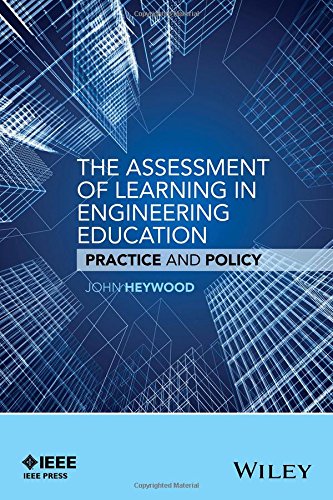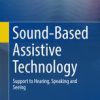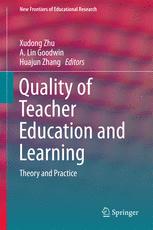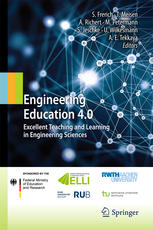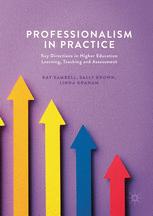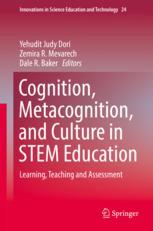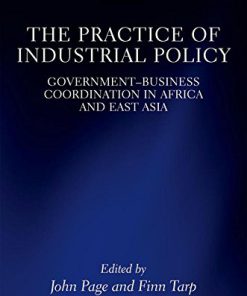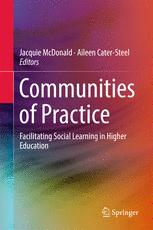The Assessment of Learning in Engineering Education Practice and Policy 1st Edition by John Heywood ISBN 1119175518 9781119175513
$50.00 Original price was: $50.00.$25.00Current price is: $25.00.
The Assessment of Learning in Engineering Education: Practice and Policy 1st Edition by John Heywood – Ebook PDF Instant Download/Delivery: 1119175518, 978-1119175513
Full download The Assessment of Learning in Engineering Education: Practice and Policy 1st Edition after payment
Product details:
ISBN 10: 1119175518
ISBN 13: 978-1119175513
Author: John Heywood
The Assessment of Learning in Engineering Education: Practice and Policy 1st Edition:
Explores how we judge engineering education in order to effectively redesign courses and programs that will prepare new engineers for various professional and academic careers
- Shows how present approaches to assessment were shaped and what the future holds
- Analyzes the validity of teaching and judging engineering education
- Shows the integral role that assessment plays in curriculum design and implementation
- Examines the sociotechnical system’s impact on engineering curricula
The Assessment of Learning in Engineering Education: Practice and Policy 1st Edition Table of contents:
1 Prologue 1
1.1 General Introduction: The Functions of Assessment 1
1.2 Health Warning: Ambiguities in the Use of the Term “Assessment” 6
1.3 The Assessment of Persons for the Professions 8
1.4 The Engineering Profession 10
1.5 The Development of Higher and Engineering Education as Areas of Academic Study in the 1960s 12
1.6 Assumptions About Examinations: Reliability 12
1.7 Myths Surrounding Examinations 14
1.8 The Introduction of Coursework Assessment 17
1.9 Rethinking Validity 19
1.10 Wastage (Dropout): The Predictive Value of School Examinations for Satisfactory Performance in Higher Education 20
1.11 Factors Influencing Performance in College Courses 22
1.12 Assessment: Results and Accountability 25
1.13 Assessing the Learner 26
Notes 27
References 27
2 Assessment and the Preparation of Engineers for Work 35
2.1 Engineers at Work 36
2.2 An Alternative Approach to the Education and Training of Engineers for Industry 37
2.3 Toward an Alternative Curriculum for Engineering 42
2.4 Creativity in Engineering and Design 43
2.5 Furneaux’s Study of a University’s Examinations in First-Year Mechanical Engineering: The Argument for “Objectives” 48
2.6 Discussion 51
Notes 53
References 54
3 The Development of a Multiple-Objective (Strategy) Examination and Multidimensional Assessment and Evaluation 61
3.1 The Development of an Advanced Level Examination in Engineering Science (For 17/18-Year-Old High School Students): The Assessment of Achievement and Competency 62
3.2 Skills Involved in Writing Design Proposals and Practical Laboratory Work 72
3.3 A Balanced System of Assessment 74
3.4 Pictures of the Curriculum Process 75
3.5 Multidimensional Assessment and Evaluation: A Case Study 79
3.6 Discussion 83
Notes 84
References 85
4 Categorizing the Work Done by Engineers: Implications for Assessment and Training 89
4.1 Introduction 90
4.2 A Study of Engineers at Work in a Firm in the Aircraft Industry 91
4.3 The Application of The Taxonomy of Educational Objectives to the Task Analysis of Managers in a Steel Plant 96
4.4 The Significance of Interpersonal Competence 96
4.5 A Comparative Study of British and German Production Engineers (Managers) 101
4.6 Engineering Knowledge 103
4.7 Discussion 105
Notes 105
References 107
5 Competency-Based Qualifications in the United Kingdom and United States and Other Developments 111
5.1 The Development of Competency-Based Vocational Qualifications in the United Kingdom 112
5.2 Outcomes Approaches in High Schools in the United Kingdom 115
5.3 Standards in Schools in the United States 116
5.4 Education for Capability: Capability vs. Competence 117
5.5 Ability (Assessment)-Led Curricula: The Alverno College Model 119
5.6 The Enterprise in Higher Education Initiative in the United Kingdom and the SCANS Report in the United States 122
5.7 The College Outcome Measures Program 125
5.8 Discussion 127
Notes 130
References 130
6 The Impact of Accreditation 133
6.1 ABET, European Higher Education Area (Bologna Process), and the Regulation of the Curriculum 134
6.2 Taxonomies 135
6.3 Outcomes-Based Engineering Education 142
6.4 Mastery Learning and Personalized Systems of Instruction 147
6.5 Discussion 152
References 152
7 Student Variability: The Individual the Organization, and Evaluation 157
7.1 Introduction 158
7.2 Learning and Teaching Styles 161
7.3 Study Habits/Strategies 163
7.4 Intellectual Development 165
7.5 Critical Thinking 168
7.6 The Assessment of Development 172
7.7 The Reflective Practitioner 174
7.8 Adaptive Expertise 180
7.9 Discussion 181
Notes 182
References 183
8 Emotional Intelligence, Peer and Self-Assessment, Journals and Portfolios, and Learning-How-to-Learn 189
8.1 Introduction 190
8.2 Emotional Intelligence 191
8.3 Self- and Peer Assessment 193
8.4 Learning Journals and Portfolios 206
8.5 Learning-How-to-Learn 209
8.6 Discussion 210
Note 211
References 211
9 Experiential Learning, Interdisciplinarity, Projects, and Teamwork 217
9.1 Introduction 218
9.2 Project Work as a Vehicle for Integrated Learning and Interdisciplinarity 219
9.3 Learning to Collaborate 220
9.4 Constructive Controversy 224
9.5 Communication Teamwork ,and Collegial Impediments to the Development of Good Engineering Practice 225
9.6 The Demand for Skill in Innovation: Can It Be Taught? 227
9.7 Creativity Teamwork and Reflective Practice (See Also Section 2.4) 228
9.8 Can Teamwork Be Taught? 229
9.9 Discussion 235
References 236
10 Competencies 241
10.1 Introduction 242
10.2 The Iowa Studies (ISU) 244
10.3 The Outcomes Approach in Australia Europe, and Elsewhere 246
10.4 The CDIO Initiative 247
10.5 A Standards-Based Approach to the Curriculum 248
10.6 Recent European Studies 252
10.7 Impact of Subjects (Courses) on Person-Centered Interventions 255
10.8 The Potential for Comparative Studies: Choosing Competencies 256
10.9 Expressive Outcomes 258
10.10 Discussion 259
References 260
11 “Outside” Competency 265
11.1 Introduction 266
11.2 Accidental Competencies 267
11.3 Understanding Competence at Work 269
11.4 Contextual Competence 270
11.5 A Post-Technician Cooperative Apprenticeship 272
11.6 Theories of Competence Development in Adult Life 275
11.7 Discussion 278
Notes 279
References 280
12 Assessment, Moral Purpose and Social Responsibility 283
12.1 Introduction 283
12.2 Moral Purpose and the Power of Grading 284
12.3 From Reliability to Validity: Toward a Philosophy of Engineering Education 284
12.4 Screening the Aims of Engineering Education 285
12.5 The Role of Educational Institutions in the Preparation for Industry (the Development of Professional Skills) 287
12.6 The Role of Industry in Professional Development 289
12.7 Assessment and the Curriculum 290
12.8 Changing Patterns in the Workforce the Structure of Higher Education 291
12.9 Lifelong Education and Credentialing 293
12.10 Conclusion 295
People also search for The Assessment of Learning in Engineering Education: Practice and Policy 1st Edition:
assessment in engineering
the importance of assessment in education
the meaning of assessment in education
the role of assessment in education
assessment in education definition
Tags:
John Heywood,Assessment,Learning,Engineering,Education,Practice and Policy
You may also like…
Education Studies & Teaching
Quality of Teacher Education and Learning Theory and Practice 1st Edition Xudong Zhu
Education Studies & Teaching
Education Studies & Teaching - School Education & Teaching
Education Studies & Teaching
Scaling up Assessment for Learning in Higher Education 1st Edition David Carless
Education Studies & Teaching
Education Studies & Teaching
Business & Economics - Mathematical Economics
Education Studies & Teaching - School Education & Teaching


